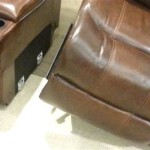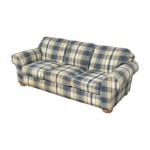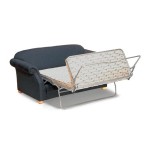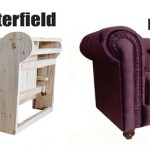The Versatile 1-Bedroom Sofa: Maximizing Space and Style
The 1-bedroom apartment presents a unique set of design challenges. Limited square footage demands careful consideration of every piece of furniture. The sofa, in particular, becomes a critical element, serving as both a seating area and potentially a sleeping space. Selecting the right 1-bedroom sofa requires balancing comfort, functionality, style, and spatial considerations. This article explores the various aspects of choosing a sofa that optimizes space and complements the overall aesthetic of a smaller living environment.
The primary objective in furnishing a 1-bedroom apartment is to maximize the usable area. Overcrowding can lead to a feeling of confinement and inhibit the flow of movement. Therefore, the sofa should be chosen with a focus on efficiency. This necessitates a careful assessment of the room's dimensions and the sofa’s intended purpose. Consider the available wall space, window placement, and the proximity to other furniture items. The optimal sofa should comfortably accommodate the resident’s seating needs without overwhelming the room. Additionally, think about how the sofa might be used in conjunction with other furniture pieces like coffee tables, side tables, and entertainment units. The harmonious integration of these elements is key to creating a visually appealing and functional living space.
Beyond space constraints, the sofa should also reflect the individual's style and complement the overall décor of the apartment. A wide range of styles, from modern minimalist to classic traditional, are available. The chosen style should align with the existing color scheme, flooring, and lighting. Different sofa types, such as sectionals, loveseats, and futons, offer varying levels of adaptability. A well-selected sofa can serve as a focal point, enhancing the aesthetic appeal of the entire room.
Considerations for Size and Configuration
The physical dimensions of the sofa are paramount when dealing with limited space. Before making a purchase, meticulously measure the intended location for the sofa. Account for both the length and depth of the sofa, as well as the height of the backrest. It is also crucial to factor in the clearance around the sofa. Allow sufficient space for walking and for opening doors and drawers without obstruction. A general guideline is to leave at least 18 inches of space between the sofa and other furniture items. The appropriate size will ultimately depend on the specific layout and dimensions of the room. A sofa that is too large will make the space feel cramped, while a sofa that is too small may appear insignificant and fail to provide adequate seating.
Configuration options further contribute to space optimization. Sectional sofas, while often associated with larger spaces, can be cleverly utilized in a 1-bedroom apartment. A smaller sectional with a chaise lounge can provide ample seating without occupying excessive floor space. The chaise lounge can also double as a comfortable spot for lounging and watching television. Loveseats, designed for two people, are typically more compact than full-sized sofas and can be a suitable option for smaller living rooms. Another approach is to opt for a sofa with a streamlined design, featuring narrow armrests and a low backrest. These design elements can help to minimize the sofa’s visual bulk and create a sense of openness. Before deciding on a specific configuration, it is highly recommended to visualize the sofa in the room using online tools or floor plans.
The overall scale of the sofa also matters. A sofa with a high backrest and bulky armrests will appear larger than a sofa with a lower profile and slimmer features. Choose a sofa that complements the scale of the room and other furniture items. Pay attention to the proportions of the sofa in relation to the height of the ceiling and the size of the windows. A well-proportioned sofa will create a sense of balance and harmony in the room.
Multifunctionality and Storage Solutions
In a 1-bedroom apartment, furniture that serves multiple purposes is highly advantageous. Sleeper sofas provide a valuable solution for accommodating guests who may need a place to sleep. Modern sleeper sofas are available in a variety of styles and sizes, ranging from traditional pull-out beds to more innovative designs such as futons and click-clack sofas. When choosing a sleeper sofa, prioritize comfort both as a sofa and as a bed. Look for sofas with a comfortable mattress and a sturdy frame. It is also important to consider the ease of converting the sofa from a sitting position to a sleeping position. A complex or cumbersome mechanism can be a deterrent to frequent use.
Storage is another critical consideration in a small living space. Sofas with built-in storage compartments can be a valuable asset for storing blankets, pillows, books, or other items. These storage compartments are typically located under the seats or in the armrests. A sofa with storage can help to declutter the room and keep essential items within easy reach. When choosing a sofa with storage, ensure that the storage compartments are easily accessible and that they provide sufficient space for your needs. The quality of the storage mechanism is also important to consider, as a poorly designed mechanism can be prone to damage or malfunction.
Beyond built-in storage, the space around the sofa can also be utilized for storage purposes. A coffee table with a lift-top or drawers can provide additional storage space for magazines, remote controls, or other small items. Side tables with shelves or drawers can also serve as storage solutions. Under-sofa storage containers can be used to store seasonal items or items that are not frequently used. By carefully considering storage options, you can maximize the functionality of the sofa and keep your 1-bedroom apartment organized and clutter-free.
Material, Style, and Maintenance
The material of the sofa significantly impacts its comfort, durability, and aesthetic appeal. Fabric upholstery is a popular choice for sofas due to its versatility and wide range of colors and textures. Common fabric options include cotton, linen, and polyester. Cotton is a natural fiber that is soft and breathable, but it is also prone to staining and fading. Linen is another natural fiber that is known for its durability and elegant appearance, but it can be expensive and wrinkle easily. Polyester is a synthetic fiber that is resistant to stains, fading, and wrinkles, making it a practical choice for high-traffic areas.
Leather upholstery offers a luxurious and durable option for sofas. Leather is a natural material that is known for its durability, resistance to wear and tear, and ability to develop a patina over time. Leather sofas are available in a variety of finishes, including full-grain leather, top-grain leather, and bonded leather. Full-grain leather is the highest quality leather and is known for its natural markings and unique character. Top-grain leather is a more refined leather that has been sanded and finished to create a smooth and uniform surface. Bonded leather is a less expensive option that is made from recycled leather scraps and polyurethane.
The style of the sofa should complement the overall aesthetic of the room. Modern minimalist sofas typically feature clean lines, simple shapes, and neutral colors. Traditional sofas often incorporate more ornate details, such as rolled arms, button tufting, and carved legs. Mid-century modern sofas are characterized by their sleek silhouettes, tapered legs, and vibrant colors. The choice of style will depend on personal preference and the existing décor of the apartment.
Maintaining the sofa’s cleanliness and appearance is crucial for its longevity. Regular vacuuming can help to remove dust, dirt, and debris. Spills should be cleaned immediately to prevent staining. Professional cleaning is recommended periodically to deep clean the upholstery and remove stubborn stains. The specific cleaning instructions will vary depending on the material of the sofa. Leather sofas should be conditioned regularly to prevent cracking and drying. Fabric sofas can be protected with fabric protectors to repel stains and spills. By taking proper care of the sofa, you can ensure that it remains a comfortable and stylish addition to your 1-bedroom apartment for years to come.
Ultimately, the selection of a 1-bedroom sofa is a multifaceted process that requires careful consideration of size, functionality, style, and maintenance. A well-chosen sofa can transform a small living space into a comfortable and inviting area.

2 In 1 Sofa Cum Bed Furniture Pull Out Sofabed Folding China Fold Sleeper Made Com

The 7 Best Furniture Pieces For A One Bedroom Apartment

Lofka Sofa Bed Convertible Chair 3 In 1 Single Couch Light Gray Com

Beatrice Snuggle Sofa Bed Dunelm

Sofa Beds Chair 3 In 1 Convertible Single Bed Grey Com

11 Best Couches And Sofas To Buy 2024 The Strategist

13 Best Bedroom Couches Small Sofas For Your

Can T Find The Right Furniture Have It Made New York Times

Balus Pull Out Sofa Bed 3 In 1 Loveseat Sleeper With 2 Side Pockets Tri Fold Multi Function Floor Gaming Couches For Living Room Bedroom Office Beige Com

Modern Hotel Simple Living Room Bedroom Furniture Set Wood Frame 1 3 Seat L Shape Leather Fabric Sofa China Beds Made In Com








